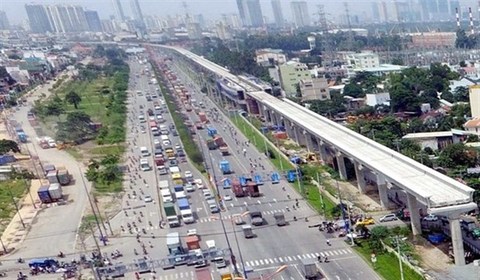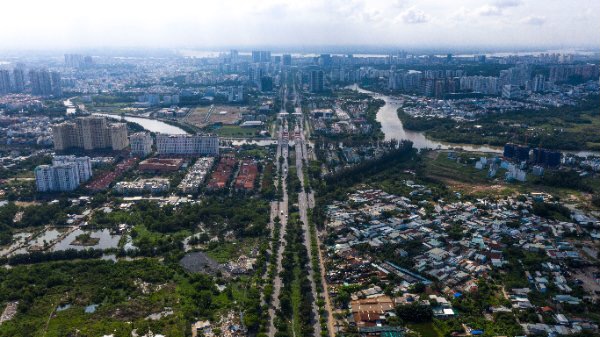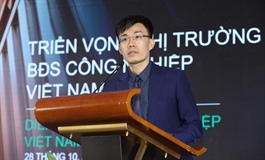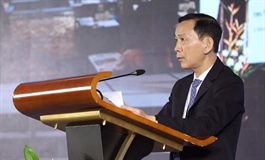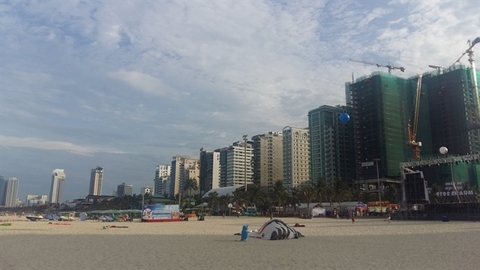C.T Group building housing for the ambitious young of Ho Chi Minh City
C.T Group building housing for the ambitious young of Ho Chi Minh City
Customers with the drive to reach higher in Ho Chi Minh City are the target of the C.T Group’s affordable housing project, Saigon Venice.
Demand is high for social housing in Ho Chi Minh City, especially among young people without great financial backing but good health and the ambition to be a driving force of the city’s development. This is why C.T Group decided to develop the most modern and creative social housing project in Ho Chi Minh City.
Keeping up with young people
At a recent international seminar titled “Social Housing Development in Vietnam – International Solutions and Experiences”, Nguyen Quang, Director of the United Nations Human Settlement Programme (UN-Habitat) in Vietnam, said: "Social housing development plays an important role in economic development, creating jobs and changing living environments."
This means that a social housing project must be accompanied by utilities and sufficient living space for everyone, especially young people, to live, and work, or study.
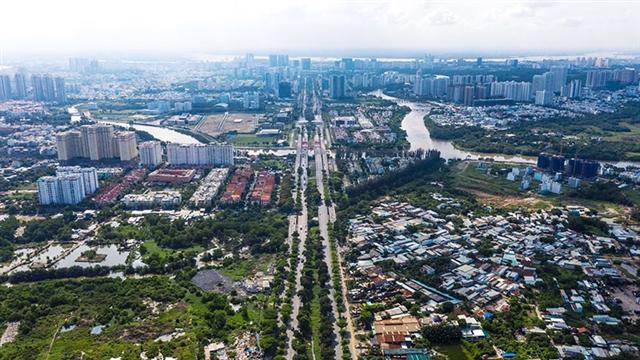
Binh Chanh district is home to large green spaces
|
Too often, however, social housing is labelled as “low-income housing”, so quality can tend to be poor. Such thinking needs to change. A representative from C.T Group, which is implementing an international-standard young social housing project in Binh Chanh district, Ho Chi Minh City, said: “The target audience at Saigon Venice is young people who do not have a great deal of assets. The residential community is developing rapidly, with good prospects to achieve prosperity. Therefore, the project’s selling prices will surely suit customers in this segment, with flexible payment methods and optimal financial support policies for everyone to have a comfortable place to live in and good quality life with easy connections.”
Quang from UN-Habitat said: “Of the 17 sustainable development goals to reach by 2030, the 11th is the promotion of sustainable development, tolerance, adaptation, and safety in cities and communities. Criterion 11.1 is to access safe and affordable housing that is also properly used and provide cultured conditions. More than 20 years ago, the Vietnamese government adopted many policies and programmes to promote social housing, and posted remarkable achievements. The field of social housing development has played an important role in economic development, job creation, and improving living environments. However, Vietnam is facing challenges in accessing appropriate housing, as prices are too high.”
Therefore, the challenge for local and foreign real estate developers is to change the definition of “social housing”, applying technology to quench the thirst for housing in young industrial urban areas, such as Binh Chanh urban area in the south of Saigon, which is emerging along with the planning of Metro Line No.3A and according to the development of the southern industrial belt.
Green technology and environment
There are two highlights housing policymakers in Vietnam have agreed upon at recent conferences: the participation of private infrastructure developers and the possibility of technology application in construction. The two factors, plus the support of an effective credit system, would be a solution to changing perceptions.

Saigon Venice is built on the premise of future prosperity among its residents
|
Never before in Vietnam has technology been as common and diverse in building, trading, and operating real estate as now. Not only are new technologies being introduced in construction, using materials and green designs suitable for the environment and saving energy, they also bring other clear benefits to young social housing projects like AI, with the ability to compute and connect resources to identify the needs of homebuyers and best respond.
Digital finance applications are also needed to make loans, payments, and financial leverage more convenient for everyone. And the most important thing: the Internet of Things (IoT), which can make the administration, operations, and use of a living space highly automated and much safer than traditional models.
That is also why C.T Group, which secured a large land fund in Binh Chanh many years ago, is the leader in the race to offer international-standard housing for young homebuyers, especially after announcing the plans for Saigon Venice urban area with five criteria: business-economy, environment, community, technology, and culture. C.T Group hopes to bring many technological elements into this new urban area, through taking advantage of supporting resources from international organisations that contribute to creating a new “young city”, with the young building a satellite town for the sustainable development of Ho Chi Minh City.
|
Five criteria for housing – young society at Saigon Venice “Business” – with connections to tens of thousands of factories owned by small- and medium-sized enterprises in the southern industrial belt, providing a good working environment for knowledgeable, dynamic, and like-minded young people. “Environment” – an urban area located in a green centre in the heart of the largest nature reserve in the city, where there are countless small rivers and canals running under the shade of ancient trees and new bridges. The new urban area is also equipped with the latest technology from Viettel and international corporations. The combination of modern buildings with a green living environment creates an ideal “community” that is young, modern, civilised, and creative. “Community” – a young, modern, and civilised community that not only lives together but is also a place for learning and personal development, with libraries and sports centres nearby. “Culture” – is the identity of the city. Sports academies, exhibition spaces, technology, and design, as well as small entertainment sites inside are built to be upgraded and transform with the lightning speed of young people’s development. “Technology” – is considered an attractive and differentiating factor at Saigon Venice. The entire urban management system, data exchange, and interaction is organised with Industry 4.0 technology. The difference in the unique technology in the urban area is that it continually creates more “businesses” for residents and is always ready for any change in technology. The area boasts a harmonious combination of Venice and Silicon Valley. |








